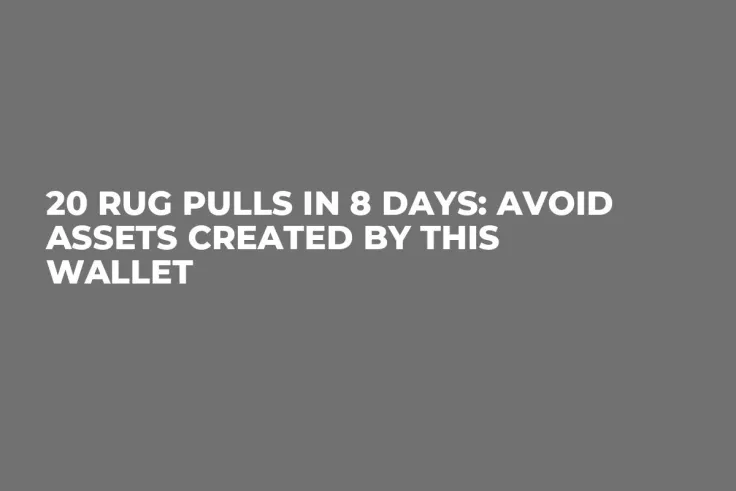
Disclaimer: The opinions expressed by our writers are their own and do not represent the views of U.Today. The financial and market information provided on U.Today is intended for informational purposes only. U.Today is not liable for any financial losses incurred while trading cryptocurrencies. Conduct your own research by contacting financial experts before making any investment decisions. We believe that all content is accurate as of the date of publication, but certain offers mentioned may no longer be available.
The past eight days, the market has witnessed a staggering 20 rug pulls, amounting to a total rug volume of approximately $150,000. This spree of deceitful activities has left the crypto community both alarmed and cautious.
The perpetrators behind these rug pulls have been meticulously orchestrating one scam after another, leaving no time for recovery or reflection. Tokens with catchy and somewhat whimsical names like FEET, FOOT, GOBLIN PARTY and UNEMPLOYED were launched and then rugged within a mere hour of their introduction.
The latest asset introduced by this dubious developer has yet to be rugged. However, its trading patterns mirror those of its predecessors. While the initial tokens like GOBLIN and FOOT garnered significant support, this new asset seems to be struggling. The buy orders, though present, are suspected to be from the developer himself or from wallets under his control. This tactic of self-buying is often used to create an illusion of demand and legitimacy.
How do these developers manage to execute rug pulls so seamlessly? The answer lies in a combination of sandwich attacks, MEV (Miner Extractable Value) bots and bribing tactics. In a sandwich attack, the scammer places a buy order, followed by a sell order and then another buy order. This artificially inflates the token's price, luring unsuspecting investors. Once the price is high enough, the scammer sells their tokens, causing the price to plummet and leaving investors with worthless assets.
MEV bots, on the other hand, are programmed to identify and exploit profitable opportunities in the market. By bribing these bots, developers can ensure their malicious transactions are prioritized, further facilitating their scams.

 Alex Dovbnya
Alex Dovbnya Caroline Amosun
Caroline Amosun Dan Burgin
Dan Burgin